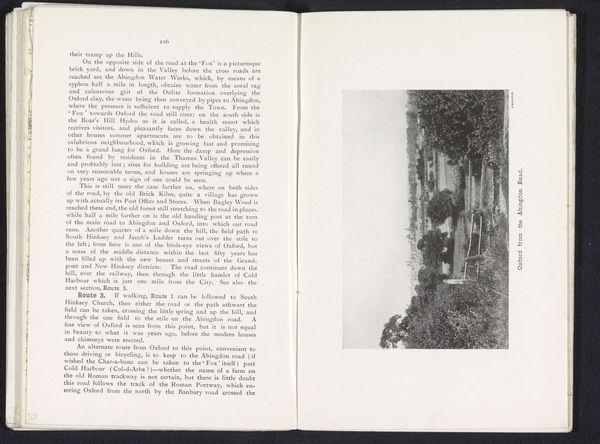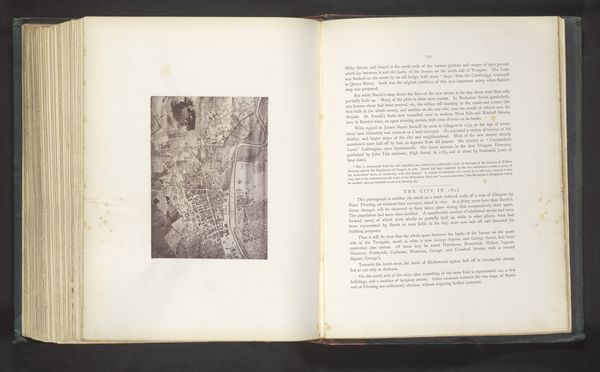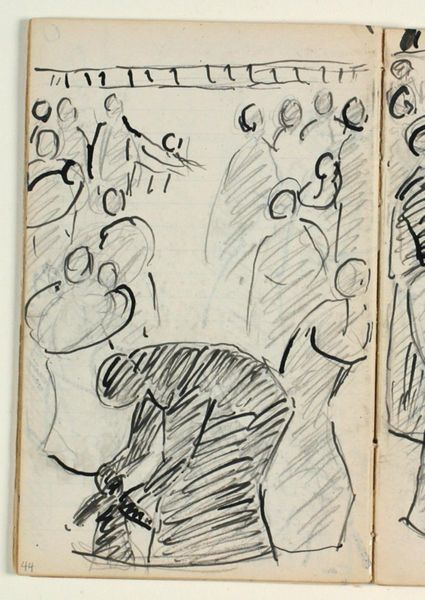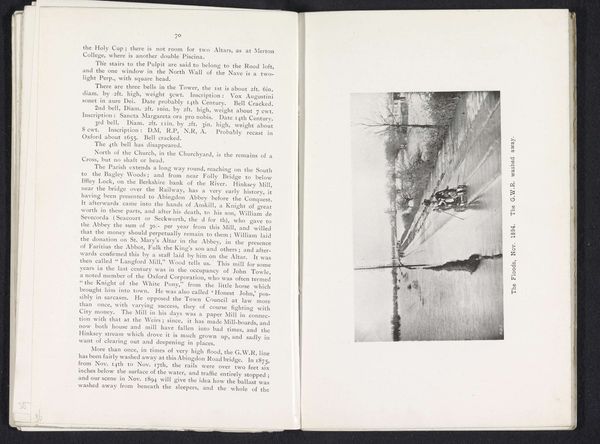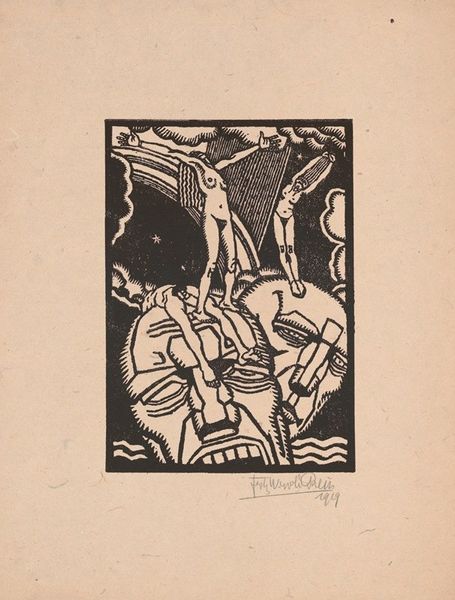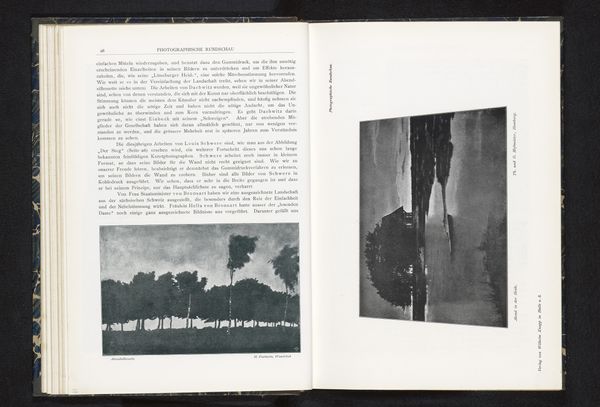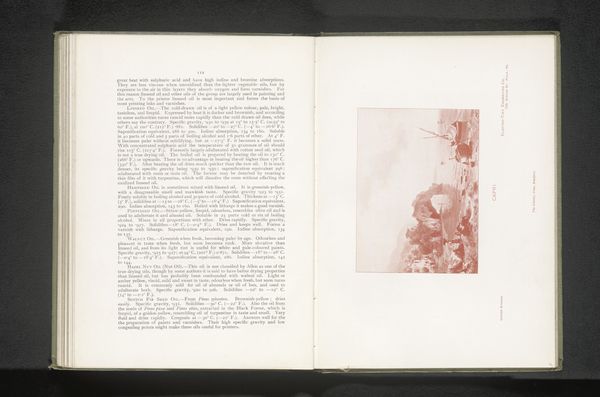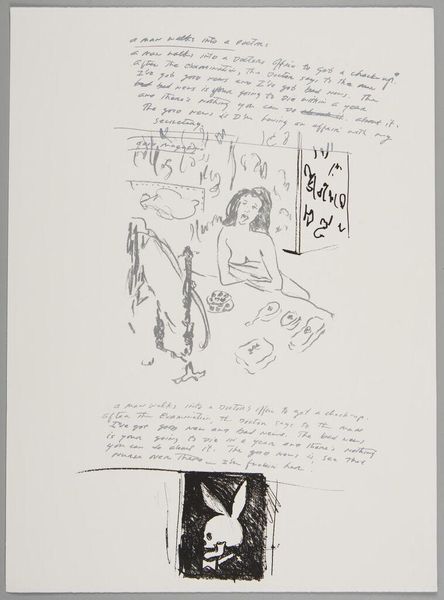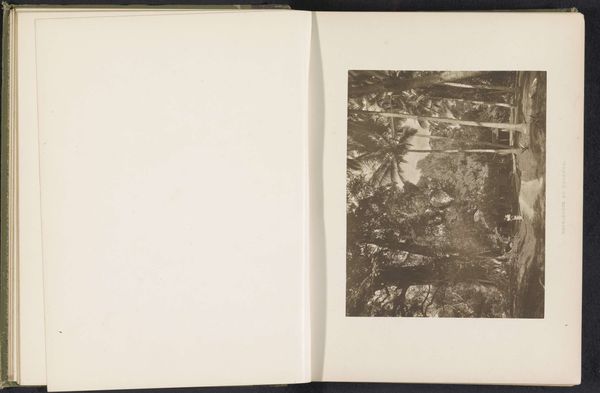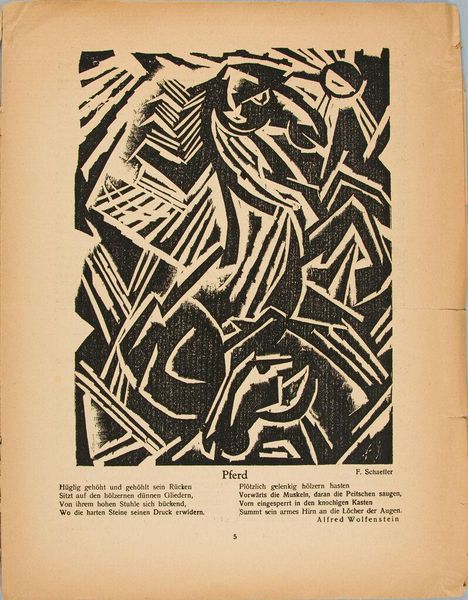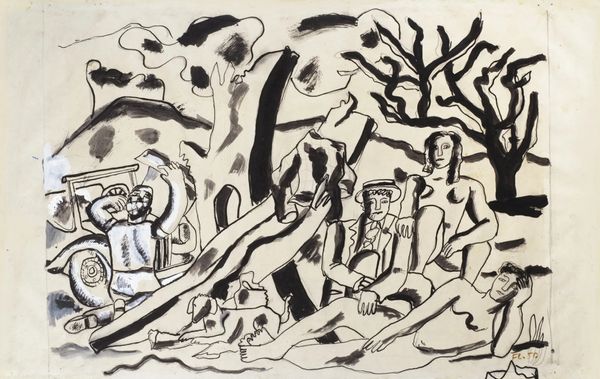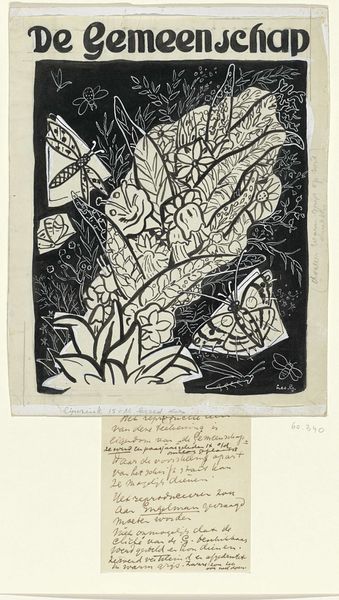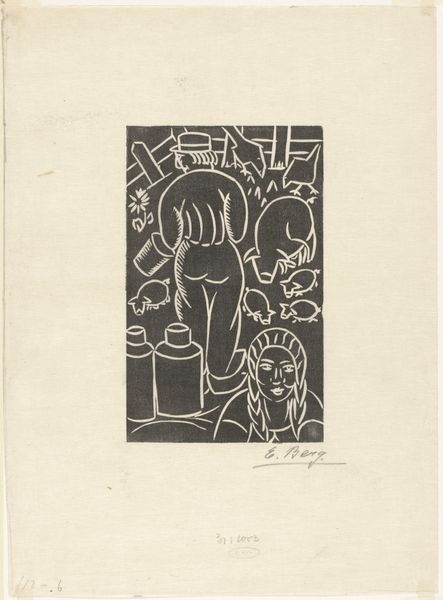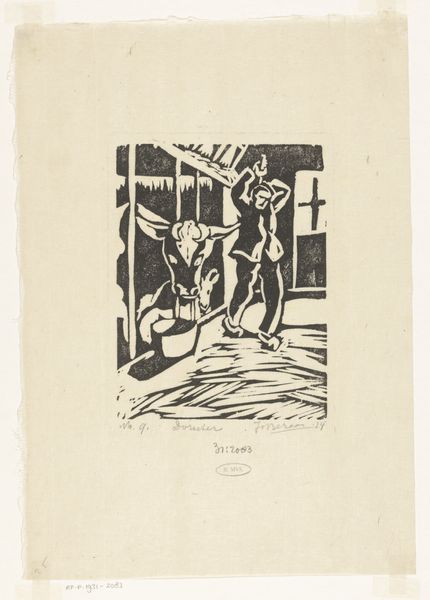
print, woodcut
book
figuration
woodcut
symbolism
nude
Dimensions: 10 1/2 x 8 in. (26.67 x 20.32 cm)
Copyright: No Copyright - United States
Curator: Let's turn our attention to André Derain's striking woodcut, “L'Enchanteur pourrissant,” created in 1909 and currently held at the Minneapolis Institute of Art. This work is a print featured in a book, embodying the Symbolist style. Editor: My initial impression is of a bold contrast – stark blacks and whites create an otherworldly space. The figure appears both strong and vulnerable, almost caught in a state of metamorphosis. Curator: Derain’s choice of woodcut is key here. The medium itself lends a primal, almost brutal energy, amplifying the Symbolist themes present. Consider, too, the sociopolitical climate around 1909, marked by burgeoning anxieties regarding societal decay and a yearning for spiritual regeneration reflected in its crude aesthetic. Editor: The figure is fascinating. The pronounced lines framing her nude body alongside a dense cluster of botanicals, and what look like fetal forms, conjure feelings tied to origin and generation, rebirth, and decomposition all at once. Do the objects carry any specific meanings that may inform a cultural memory for its viewers? Curator: Precisely. The title translates to “The Rotting Sorcerer,” pointing to the inherent tension between life and decay, and suggesting a corrupted, decaying power. We might see this artwork in conversation with anxieties surrounding societal decadence. It prompts crucial questions of power, gender, and the female body as a contested site. Editor: Yes, the symbolism is compelling. Perhaps these abstract organic forms serve as visualizations of nature's relentless regenerative cycle. The composition guides the viewer through ideas that invite us to look inward. This bold and primitive depiction may be tapping into our primordial connection to creation. Curator: The use of such visual imageries certainly evokes contemplation around notions of cultural history, connecting historical anxieties to present-day concerns regarding environmental destruction and societal breakdown. Editor: Absolutely, I leave with an interesting juxtaposition to contemplate about life cycles, beauty, corruption, and the symbolic links with primordial femininity, thanks to this thought-provoking artwork. Curator: A potent illustration, reminding us of the enduring complexities surrounding gender, power, and our relationship to nature.
Comments
Produced in collaboration with Fauve artist André Derain, The Rotting Sorcerer features a prose-poem by French avant-garde poet, essayist, and critic Guillaume Apollinaire (1880-1918). It is Apollinaire's first published volume of poetry and the first book illustrated with original prints by Derain. Fascinated by the ritual and romance of Arthurian legends, Apollinaire based his poem on the mythical character Merlin the Enchanter, the medieval wizard, prophet, and counselor in King Arthur's court. Through a strange lyrical dialogue between Merlin and his love interest, the nymph Viviane, the poem describes Merlin's death and entombment and recounts a series of graveside visits by various mythological and historical figures. Derain contributed a series of 32 monochromatic woodcuts that augment Apollinaire's poems, but did not illustrate them. In these bold, simplified designs, Derain reveals his strong interest in African sculpture and the graphic art of Paul Gauguin.
Join the conversation
Join millions of artists and users on Artera today and experience the ultimate creative platform.
